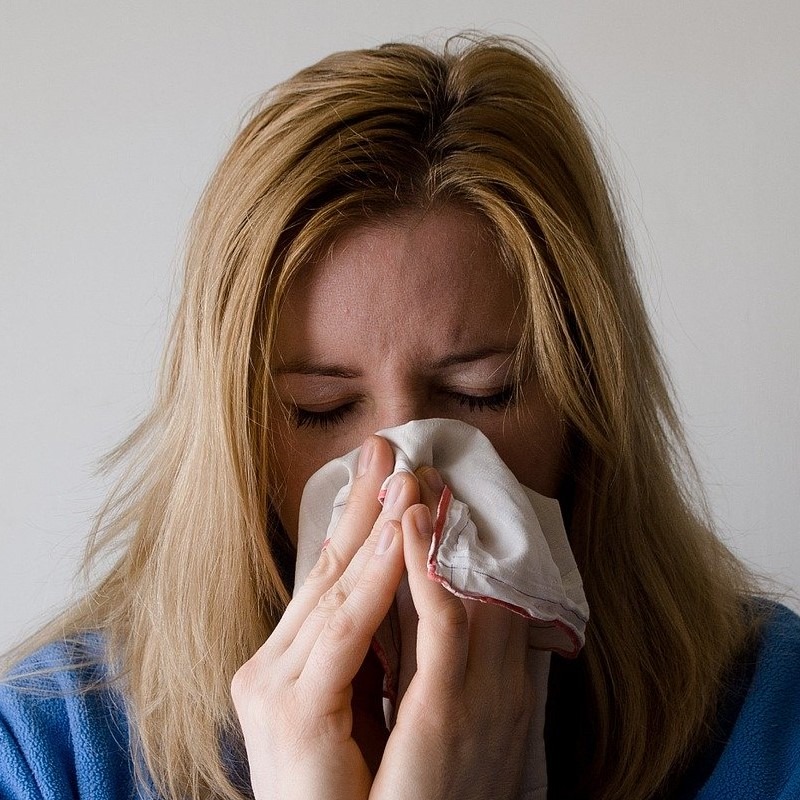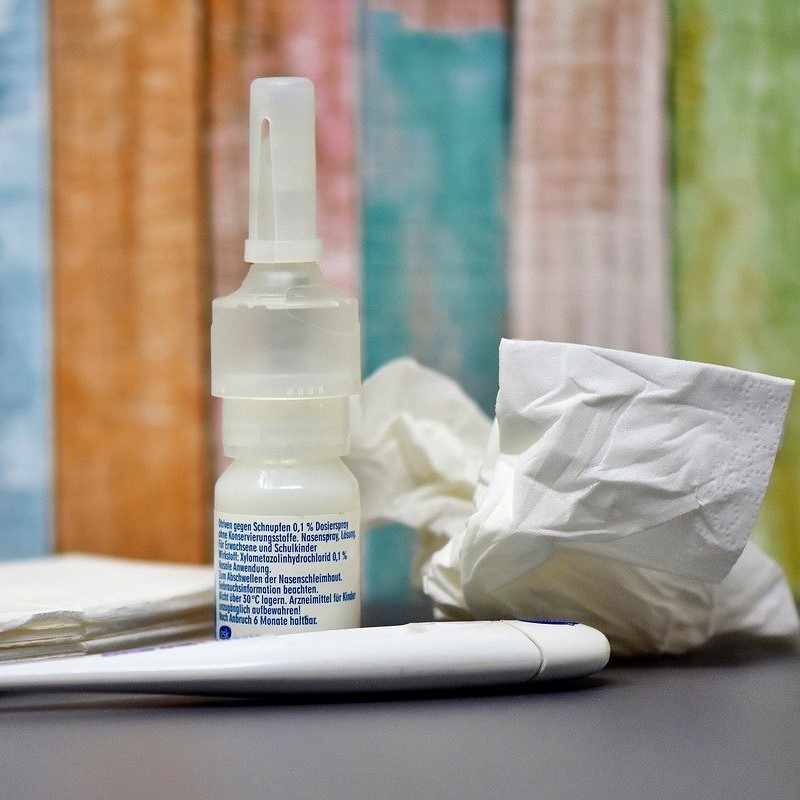When people get together, there is always the possibility one or more may be sick or carrying a contagious disease. Because of the nature of highly contagious diseases, they can spread quickly and sometimes dangerously.
Add to that the daily realities and challenges of large numbers of people living and working in a facility together, and you have the potential of an outbreak on your hands. Dealing with an outbreak can be costly- both financially and to your reputation.
An understanding of highly contagious diseases and how they spread is necessary to combat such outbreaks. As is instilling best practices, protocols, and training for all staff members— and those in your care.
At Wello, we have also pioneered tools that can be used to prevent the spread of infection like welloStationX.
Let’s begin by clearly defining disease and disease types then move on to how diseases are spread and what you can do to prevent the spread of highly contagious diseases.
What Is a Disease?
Let’s start with a simple definition of disease. Dictionary.com defines a disease as “a disorder of structure or function in a human, animal, or plant, especially one that produces specific signs or symptoms or that affects a specific location and is not simply a direct result of physical injury.
“This is the simplest definition, if you are interested in the more in-depth debate of what defines disease, read Jackie Leach Scully’s 2004 article, “What is a disease?”
What Is Infectious Disease?
According to Merriam Webster, an infectious disease is “communicable by contact with one who has it, with a bodily discharge of such a patient, or with an object touched by such a patient or by bodily discharges”.
Are All Infectious Diseases Communicable?
Microorganisms cause infectious diseases. Although infectious diseases have the potential to be infinitely transferable to new individuals, they may or may not be communicable.
For example, a disease caused by toxins such as food poisoning or tetanus is non-communicable because it cannot be transferred from one source to another.
On the other hand, an infectious disease that can be transmitted from one source to another by infectious bacteria or viral organisms is communicable.
What Is a Contagious Disease?
According to Merriam Webster, the medical definition of contagious disease is “an infectious disease communicable by contact with one who has it, with a bodily discharge of such a patient, or with an object touched by such a patient or by bodily discharges.”
Contagious diseases can transfer from person to person either directly, through secretions, through objects that have been touched by the diseased, or even through the air.
Examples of the vehicles of transmission would be mosquitos or needles. The boundary between contagious and non-contagious infectious diseases is still fuzzy.
What’s the Difference Between Infection and Disease?
The terms infection and disease are not interchangeable. Infection is usually the first step of a disease. Infection occurs when bacteria, viruses, or other microbes that cause disease enter the body and begin to multiply.
As these microbes multiply, they cause damage. This damage results in disease, and eventually, signs and symptoms of an illness appear.
Now that we have a better understanding of types of disease let’s hone in on contagious diseases because these are going to be your biggest concern.
What Causes Contagious Diseases?
Contagious diseases are usually categorized as bacterial, viral, fungal, and protozoan.
Bacteria
Bacteria are one-celled organisms that are only visible with a microscope. They are either pathogenic or beneficial. Pathogenic bacteria cause infectious diseases, while beneficial bacteria aid in digestion.
Some pathogenic bacteria produce toxins that damage cells and make you ill. Other pathogenic bacteria directly invade and damage tissues. Some infections caused by bacteria include:
- Strep throat
- Tuberculosis
- Urinary tract infections
Viruses
Much smaller than cells, viruses are basically capsules that contain genetic material. Viruses require a host cell to survive. To reproduce, viruses invade cells in the body and hijack the machinery that makes cells work. The host cells are usually destroyed during this process.
Common viruses include:
- AIDS
- Common cold
- Ebola hemorrhagic fever
- Genital herpes
- Influenza
- Measles
- Chickenpox and shingles
Fungi
Fungal infections affect the skin, mucous membranes, and internal organs. There are many varieties of fungi. You are likely familiar with the harmless fungi that we eat, such as mushrooms, molds in cheese, and yeast in bread.
However, other fungi, like candida, can cause illness. Candida is a yeast that can cause thrush — an infection of the mouth and throat. You may also be familiar with other fungal infections that are responsible for skin conditions like athlete’s foot and ringworm.
Protozoans
These tiny single-celled organisms behave like tiny animals — hunting and gathering other microbes for food. Protozoans can be found living in food, soil, water, or insects.
Some get into your body through the food you eat or the water you drink. Not all protozoans are harmful. Many live in the intestinal tract and are harmless. But others can cause diseases like Giardia, Malaria, and Toxoplasmosis.
What Are the Most Highly Contagious Diseases?
First, let’s determine what a highly contagious disease is. Highly contagious disease are deemed as such because they have the potential to impact public health negatively.
Typically, highly contagious diseases result in high mortality and morbidity rates, which can cause public panic and therefore require extraordinary measures.
Pathogens that can be quickly disseminated or transmitted from person to person are the riskiest for prisons, schools, nursing homes, and any other facilities where there is a large population interacting under one roof.
1. Norovirus (Stomach Flu)
Norovirus causes inflammation in the gut, resulting in pain, nausea, diarrhea, or vomiting. This virus spreads through contact with the stool or vomit from an infected person or food or drinks contaminated with the virus.
2. Influenza (The Flu)
Influenza causes symptoms such as fever, chills, cough, sore throat, runny or stuffy nose, body aches, headache, and fatigue. The flu spreads through droplets from an infected person’s cough or sneeze. It is easily transferred through touching a surface that has the virus on it and then touching one’s mouth, eyes, or nose.
3. Meningitis
Meningitis, inflammation of the protective membranes around the brain and spinal cord, causes nausea, vomiting, sensitivity to light, and confusion. Saliva and mucus spread this disease. The most contagious type of meningitis is bacterial meningitis.
4. Hand, Foot, and Mouth Disease (HFMD)
Several different viruses cause HFMD. Symptoms follow a progression from fever and sore throat to painful mouth sores to a skin rash on the hands, feet, knees, elbows, and buttocks. HFMD is transferred by contact with an infected person’s saliva, stool, or blister fluid, or by touching objects that have the virus on them.
5. Pertussis (Whooping Cough)
Pertussis is a respiratory disease caused by the bacterium Bordetella pertussis. It causes uncontrollable coughing fits and makes it difficult to breathe. Most common in infants, Pertussis can be deadly in babies who are still in their first year.
6. Sexually Transmitted Infections (STIs)
STIs can lead to cancer, infertility, pregnancy complications, infections in other parts of the body, and even death. There are many types of STIs, including chlamydia, genital herpes, gonorrhea, hepatitis B, HIV/AIDS, syphilis, and others, and they are all transferred through sexual contact.
7. Methicillin-resistant staphylococcus aureus (MRSA)
MRSA causes skin infections that appear as a red, swollen, painful, warm bump. Fever may appear as an additional symptom. MRSA spreads via contact with pus from infected wounds. MRSA is resistant to antibiotics and can lead to severe problems, including bloodstream infections and pneumonia.
8. Tuberculosis (TB)
TB is a bacterial infection of the lungs that causes coughing, chest pain, and other symptoms. Left untreated, it can lead to death. Although it is relatively rare in the United States, TB is common in other parts of the world and is highly contagious. TB is easily transferred by air contaminated with germs that have been released into the air when a person with TB coughs, sneezes, or speaks.
What Are Best Practices to Ward off Highly Contagious Diseases?
What’s the best way to keep your facility disease-free? Prevention. The first step is to ward off the cause of disease, infection. How to ward off infection? Keep the germs from spreading. Here are a few best practices that you and your staff can put into place- and teach those in your care- to keep the germs at bay.
1. Wash Hands Often and Well
One of the easiest and most effective ways to protect yourself from and prevent the spread of germs and most infections is hand washing. Learn how to Clean Hands and Help Prevent Flu
2. Clean & Disinfect Commonly Used Surfaces
Germs often live on surfaces. Soap and water are usually sufficient for cleaning surfaces, but you should disinfect your bathroom and kitchen regularly. If someone in the house is ill, do your best to disinfect the areas where they have been. EPA certified disinfectant, bleach solution, or rubbing alcohol are excellent disinfectants.
3. Cough & Sneeze IntoYour Sleeve
Coughing and sneezing into your sleeve rather than into your hands is a surprisingly effective way to prevent the spread of infection-causing germs. Learn how and when to cover your cough and sneeze.
4. Don’t Share Personal Items or food
Protect yourself against germs. Do not share personal items that can’t be disinfected, like toothbrushes and razors, or used towels. Never share needles, use them only once, and then dispose of them properly.
Also, do not share food or beverages with your colleagues, friends, or loved ones. You never know when someone might be carrying a highly infectious disease around with them.
5. Don’t Touch Wild Animals
Wild animals can spread infectious diseases to you and your pets. Avoid interacting with them whenever possible.
6. Stay Home (Or Isolate) When Sick
This is one of the most obvious, but least practiced forms of prevention. If a team member gets sick, they need to keep the sick at Home until they are past the contagious phase. If they are a resident of your facility, appropriate isolation practices should be put in place.
7. Vaccinate
Certain diseases are vaccine-preventable. Although many vaccines are administered in childhood, adults still need to be routinely vaccinated to prevent illnesses like tetanus and influenza.
8. Take Medicine
Medicines that offer short-term protection from particular germs are available. Consult with your healthcare consultant or provider for more information.
When Do You Need Medical Care?
Sometimes even the best efforts aren’t enough when it comes to highly contagious diseases. After all, you can’t control everything and everyone.
If anyone on your team or in your care suspects they have an infection or has experienced any of the following, medical care is required.
- An animal or human bite
- Difficulty breathing
- A cough lasting longer than a week
- Periods of rapid heartbeat
- A rash, especially if it’s accompanied by a fever
- Swelling
- Blurred vision or other difficulty seeing
- Persistent vomiting
- An unusual or severe headache
We Can Help
If a contagious disease has pierced your defenses, we can help. Our self-service hands-free body temperature monitoring solution, welloStationX, can help deter highly contagious diseases from spreading.
welloStationX is a self-service hands-free system that measures body temperature in just 3 seconds, enabling healthcare, education, jail, and any high-volume location or business to help prevent infection spread by detecting individuals with elevated temperatures immediately.
Our team strives to find ways to leverage technology to help prevent the spread of disease. We’re dedicated to making wellness epidemic by breaking the chain of contagious infection.
Schedule an appointment to learn more!


